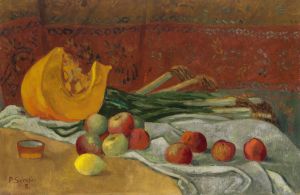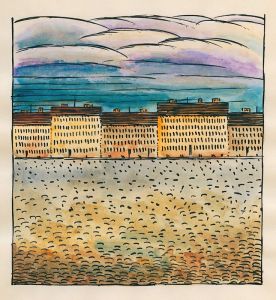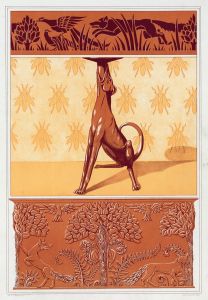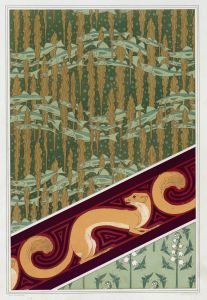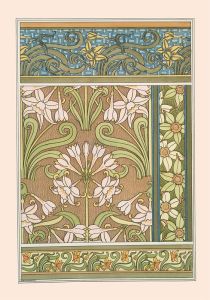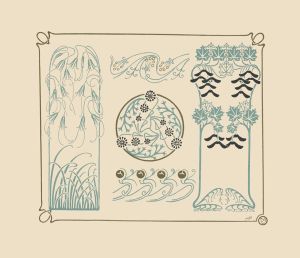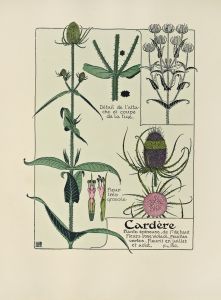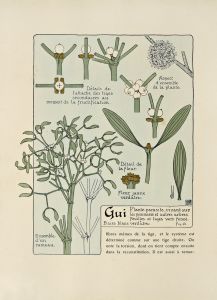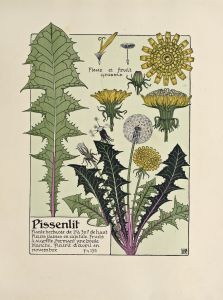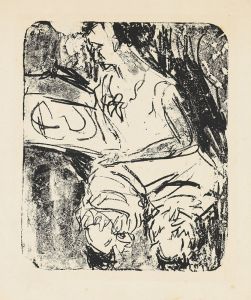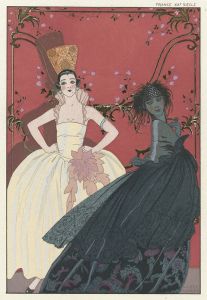
Lézard
A hand-painted replica of Maurice Pillard Verneuil’s masterpiece Lézard, meticulously crafted by professional artists to capture the true essence of the original. Each piece is created with museum-quality canvas and rare mineral pigments, carefully painted by experienced artists with delicate brushstrokes and rich, layered colors to perfectly recreate the texture of the original artwork. Unlike machine-printed reproductions, this hand-painted version brings the painting to life, infused with the artist’s emotions and skill in every stroke. Whether for personal collection or home decoration, it instantly elevates the artistic atmosphere of any space.
Maurice Pillard Verneuil was a prominent French artist and designer known for his contributions to the Art Nouveau movement. Born in 1869, Verneuil's work spanned various forms, including graphic design, illustration, and decorative arts. His style was characterized by the use of natural forms and motifs, often drawing inspiration from the flora and fauna around him. One of his notable works is "Lézard," which exemplifies his artistic approach and thematic interests.
"Lézard," which translates to "Lizard" in English, is a piece that showcases Verneuil's fascination with the natural world. While specific details about the creation date or the medium of "Lézard" are not widely documented, it is consistent with Verneuil's broader body of work, which often featured detailed and stylized representations of animals and plants. His works were known for their intricate patterns and vibrant colors, reflecting the Art Nouveau style's emphasis on beauty and harmony with nature.
Verneuil's approach to art was heavily influenced by the Japanese art form known as "Japonisme," which became popular in Europe in the late 19th and early 20th centuries. This influence is evident in "Lézard," where the depiction of the lizard might include elements such as flowing lines and an emphasis on the creature's natural elegance. The Art Nouveau movement, to which Verneuil was a significant contributor, sought to break away from traditional artistic norms and embraced a more organic and free-flowing aesthetic.
In addition to his artistic creations, Verneuil was also known for his work in publishing. He authored several books and portfolios that focused on decorative arts and design principles. These publications often included plates and illustrations that served as inspiration for other artists and designers of the time. His works were not only appreciated for their aesthetic value but also for their educational content, providing insights into the application of design in everyday objects.
Verneuil's legacy in the world of art and design is marked by his ability to blend beauty with functionality. His works, including "Lézard," continue to be studied and admired for their contribution to the Art Nouveau movement and their reflection of the era's cultural and artistic trends. Although specific exhibitions or collections featuring "Lézard" are not extensively documented, Verneuil's influence is evident in the continued appreciation and study of his work in art history.
Overall, Maurice Pillard Verneuil's "Lézard" is a testament to his skill in capturing the essence of nature through art. It reflects the broader themes of the Art Nouveau movement and highlights Verneuil's role in shaping the direction of decorative arts during his time. His work remains a valuable part of the artistic heritage, offering insight into the innovative spirit of the late 19th and early 20th centuries.





